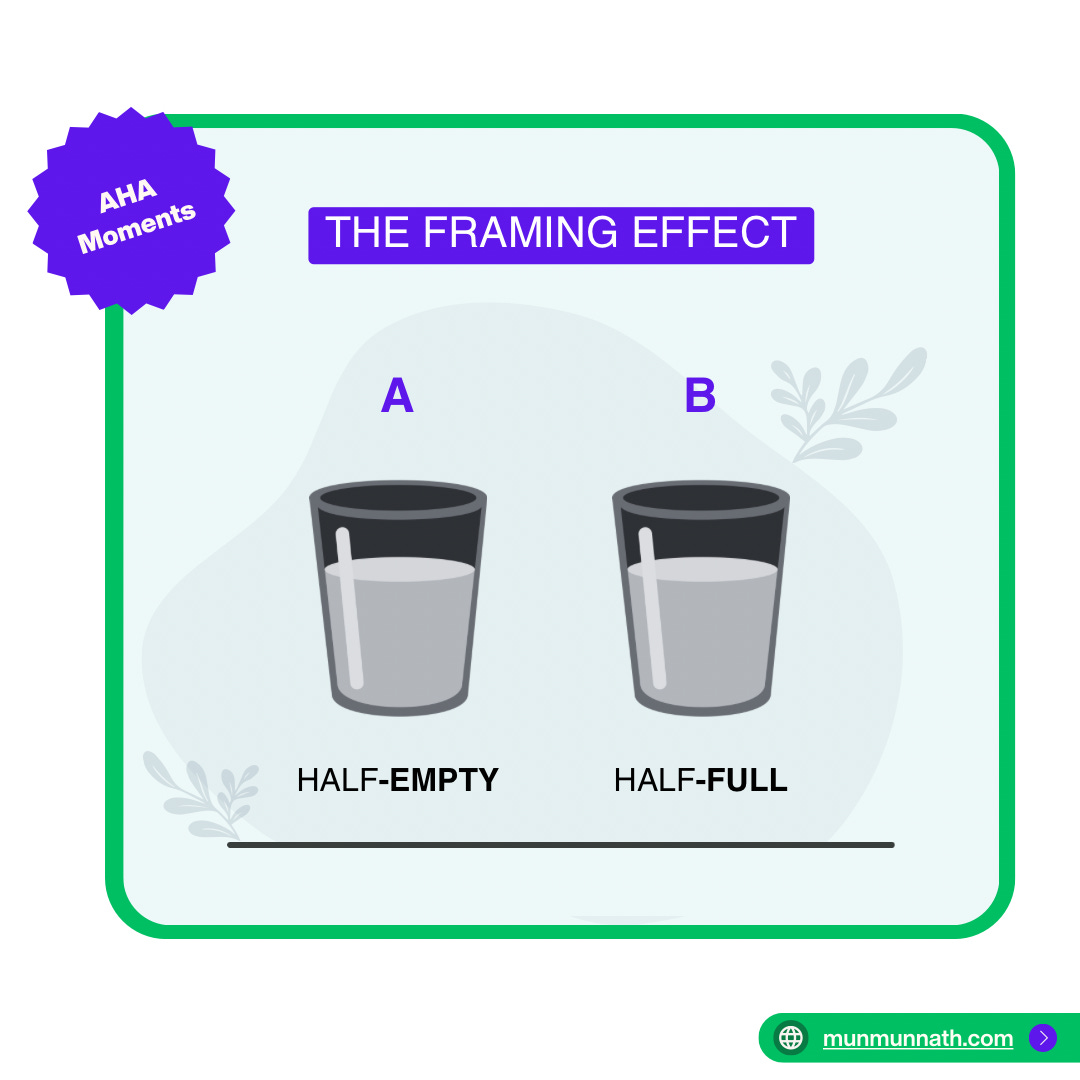24. Glass Half-Empty or Half-Full?
How framing affects our decision making.
In photography, framing means placing some sort of visual boundary around your subject to draw attention to it and set it apart from the image as a whole. Frames are a way for the photographer to direct the viewer’s attention to a subject.
Now, consider these choices -
1. Would you choose ice cream (A) that is 90% sugar-free or ice cream (B) with 10% sugar?
2. Would you opt for surgery (A) with a 90% survival rate or surgery (B) with a 10% mortality rate?
Studies have shown that most people prefer option (A) because it sounds better than (B), even though they lead to the same outcomes.
What makes (A) and (B) feel different? That’s the effect of framing.
Framing uses our cognitive bias toward how things are ‘framed’ or presented to us—in words, design, or tone.
Nobel-prize-winning psychologists Daniel Kahneman and Amos Tversky identified the framing effect while laying the groundwork for prospect theory, which discovered that people often make irrational decisions influenced by how choices are framed.
Their famous study presented volunteers with two scenarios based on 600 people contracting a fatal disease and two alternative programs (A and B) proposed to combat it. One group of participants were given the following possible outcomes:
Program A – 200 people will be saved.
Program B – There is a 1/3 probability that 600 people will be saved and a 2/3 probability that no people will be saved.
72% of participants chose program A.
A second group of participants were then presented with the following:
Program C – 400 people will die.
Program D – There is a 1/3 probability that nobody will die and a 2/3 probability that 600 people will die.
In this group, 78% of participants chose D.
Framing the same facts differently can lead to entirely different decisions!
Marketing communications put framing to great use, as you can observe in the following instances -
Here are the 5 common techniques marketers use to frame their messages -
Therefore, choosing the right frame for a product involves understanding your target audience, the nature of the product, and the context in which it will be marketed. You can also combine frames for more effectiveness. Run campaigns using different frames and do A/B testing to measure which resonates more with your audience.
Sources:
https://brandmarketingblog.com/articles/branding-how-to/framing-effect-in-marketing-and-advertising/
https://theemotionallearner.com/2018/09/19/framing-language-to-promote-positive-behaviour/






